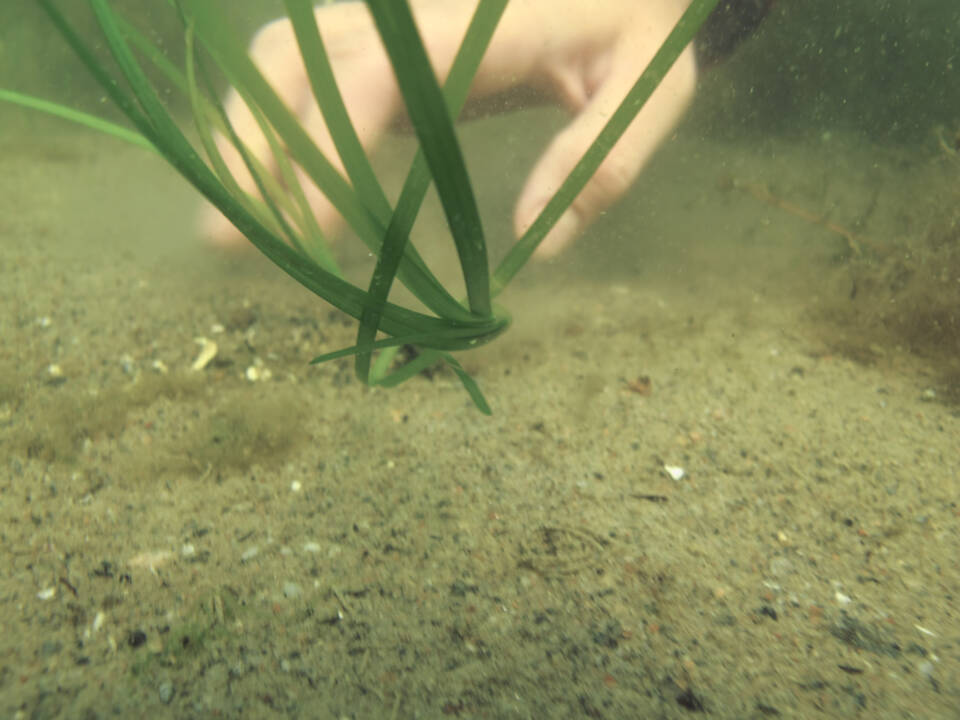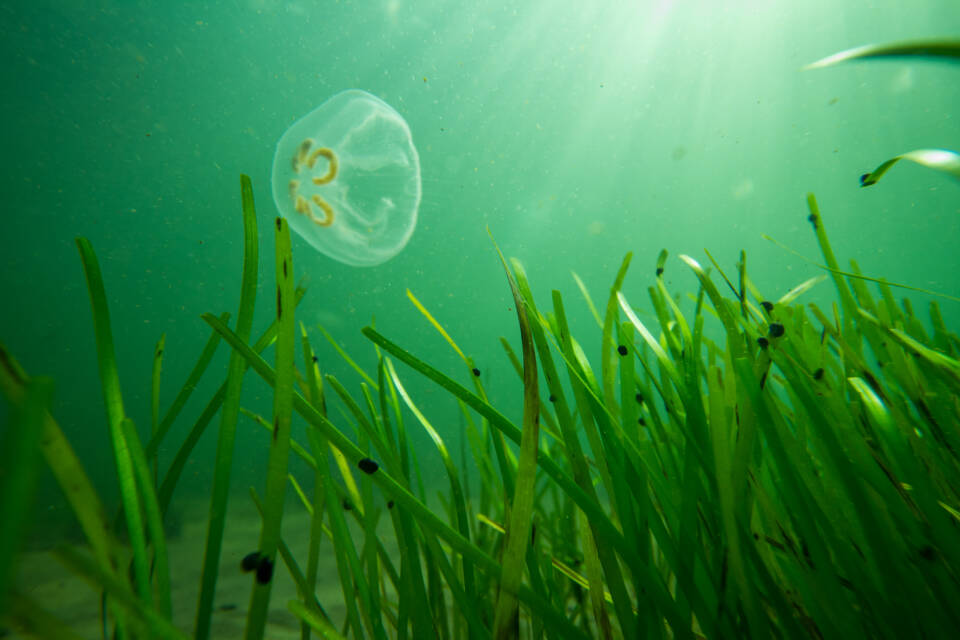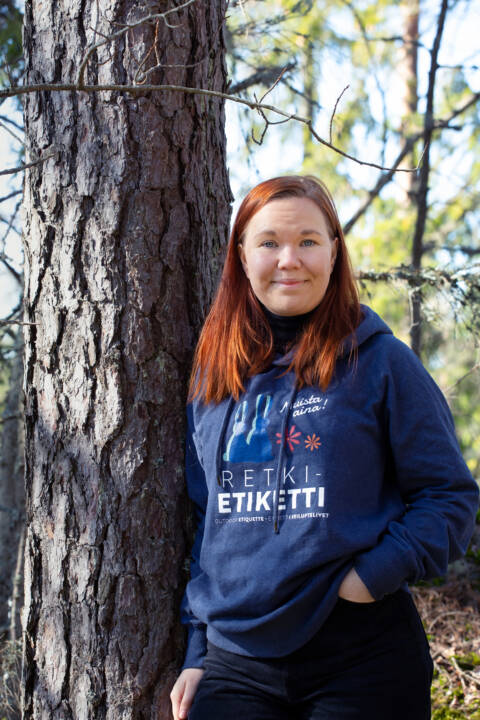
What does the restoration of the Baltic Sea mean ─ and why is it worthwhile?
The discussion around restoration is heating up. Would it be time to cool it down by turning our attention to the Baltic Sea, whose average temperature in November is around eight degrees? Marine habitats can also be restored, although underwater restorations have so far been carried out in Finland only to a limited extent and by piloting new methods. The results from the experiments are encouraging: the restoration of the flada threshold and the transplantation of eelgrass meadows can slow down the natural degradation of the sea.
Metsähallitus’ Natural Heritage Services has been restoring terrestrial nature for almost 40 years: mires, forests, groves, and traditional biotopes. We have solid expertise in how to restore terrestrial nature and the benefits of it (spoiler alert: a lot, more about that here(siirryt toiseen palveluun)).
However, we have only started restoring marine nature a few years ago. The plans for this are nationally ambitious. Finland is committed to the goals of the EU Marine Strategy Framework Directive, which means that we will achieve good status in Finland’s marine areas by 2030. To achieve this goal, a marine management action program has been developed, which promotes the goal of good status with concrete measures. The action program includes several measures for the restoration of underwater nature.

At the turn of 2023, the LIFE-IP Biodiversea project was launched to create a comprehensive plan for the entire coastline on how to improve the status of marine habitats and species through active restoration and rehabilitation measures. Restoration is currently being carried out in protected areas, but private water areas outside the protected area network also play a role if we are to achieve our goals.
What do we already know about marine restoration, why is it essential to combat biodiversity loss, and what role do private protected areas play? I invited two marine experts, Anu Riihimäki, Head of Conservation at Metsähallitus’ Marine Team, and Anna Klemelä, Marine Biodiversity Expert at the Baltic Sea Action Group, to answer.
What does marine restoration mean in practice?
Anu: Marine restoration can be done in many ways. For example, it is possible to plant species such as eelgrass, bladderwrack, or charophytes in areas where they previously existed but have since disappeared. Transplanting aims to restore a species-rich habitat. For example, many snails and crustaceans graze on eelgrass leaves, which serve as food for fish and their fry. Restoration can also mean, for example, partially closing the mouth of a dredged flada and restricting water flow or creating a wetland in the catchment area. All these measures combat the natural degradation of the Baltic Sea.
What restorations have we done so far, and what have we learned from them?
Anu: We have boldly started restoring, among other things, closed sea bays, such as fladas and gloes, sandy bottom habitats, such as eelgrass meadows, and we also have plans to restore estuaries. Underwater restoration has been carried out for a few years, and we are constantly learning more about how restoration can be done underwater. Fladas and gloes have so far been restored mainly within the framework of the HELMI habitat program.
So, restoration is not a new thing; it is already being done, and we are nationally committed to reversing the development of the Baltic Sea by all means so that by 2030 we will have a Baltic Sea in good condition that we can all sustainably enjoy.

What challenges are associated with the restoration of marine and coastal areas?
Anu: The biggest challenge at the moment is that not much is known about underwater restoration, and experiences with restoration are quite limited. Additionally, eutrophication and climate warming pose their own challenges in selecting restoration sites.
However, we have learned a lot in a few years and continue to learn more. In addition, many measures have been taken and are still being taken in Finland to curb eutrophication, so I believe that once the eutrophication process is halted, entirely new opportunities for restoration will open up! In the coming years, we will be able to apply our lessons more broadly to areas that are not currently the focus due to eutrophication.
The cost of restoration has been much discussed. Why is it worth investing my tax money in the Baltic Sea?
Anu: A beautiful and healthy archipelago nature requires that the nature below the sea surface is also doing well. Restoration creates habitats for various underwater invertebrates, which many seabirds use as food. Thus, underwater restoration measures can help local bird populations. Fish fry, for example, use eelgrass meadows and lagoons as shelters, so restoration can also have positive effects on local fish stocks.
Ultimately, restoration benefits us all, as a healthy Baltic Sea and archipelago nature enable various livelihoods and recreational services for both residents and tourists.
A healthy Baltic Sea maintains biodiversity. Only diverse nature can cope with the challenges posed by climate change and maintain a functioning ecosystem on which we humans also depend.
Restoration is mainly carried out in protected areas. One of the goals of the Biodiversea project is to increase the area of protected marine areas. Could my cottage shore be under protection? What would be the benefit of that?
Anna: Protecting your own water area can be a concrete way for a landowner to help the Baltic Sea. A protected area also safeguards the landowner, as it allows the owner to keep the waters and seascape of their home or cottage shore beautiful for future generations.
Establishing a protected area is possible if the area contains species or habitats in need of protection. The usage restrictions related to protection are tailored for each area individually and are based on the natural values in need of protection found in that area. Unnecessary restrictions are not imposed, and exceptions can also be written into the restrictions. For example, necessary maintenance dredging can be allowed, even though dredging is generally prohibited in protected areas.
The authority deciding on protection is the local ELY Centre. A protection decision can be made once the landowner and the ELY Centre have reached an agreement on the protection restrictions.
A landowner interested in protection can contact their local ELY Centre or the Baltic Sea Action Group(siirryt toiseen palveluun).

How was a private protected area established in Gullkrona?
Anna: A major private conservation effort was completed in October when, at the initiative of BSAG and with the assistance of Metsähallitus, the largest private protected area in the Archipelago Sea was established in the waters of Gullkrona(siirryt toiseen palveluun). The marine protected area of Gullkrona covers 4,800 hectares and includes many habitats essential for the underwater biodiversity of the Baltic Sea.
The area’s fishing cooperative includes more than 20 landowners who decided on the protection together. The landowners were also involved from the beginning in planning the restrictions related to protection. This ensured that the restrictions were realistic for the landowners to follow. The consent and involvement of the landowners are crucial in establishing a private protected area.
Many landowners in the area welcomed the conservation initiative with enthusiasm. The feedback clearly showed that private owners of water areas are concerned about the state of the Baltic Sea and want to help it.
Can restoration be done in private water areas?
Anu: Restoration measures are also possible in private water areas if the area is suitable for restoration based on its characteristics. A good example could be a sheltered sea bay, such as a flada or glo, where the threshold leading to the bay has been dredged open. In such cases, often rebuilding the threshold restores the natural water balance of the flada, making it a significant breeding ground for fish fry again.
This text was produced with the support of EU LIFE funding in the LIFE-IP BIODIVERSEA project. The text does not necessarily reflect the opinion of the European Union. CINEA and the European Commission are not responsible for the use of the information contained in this text.

Back to points of view


